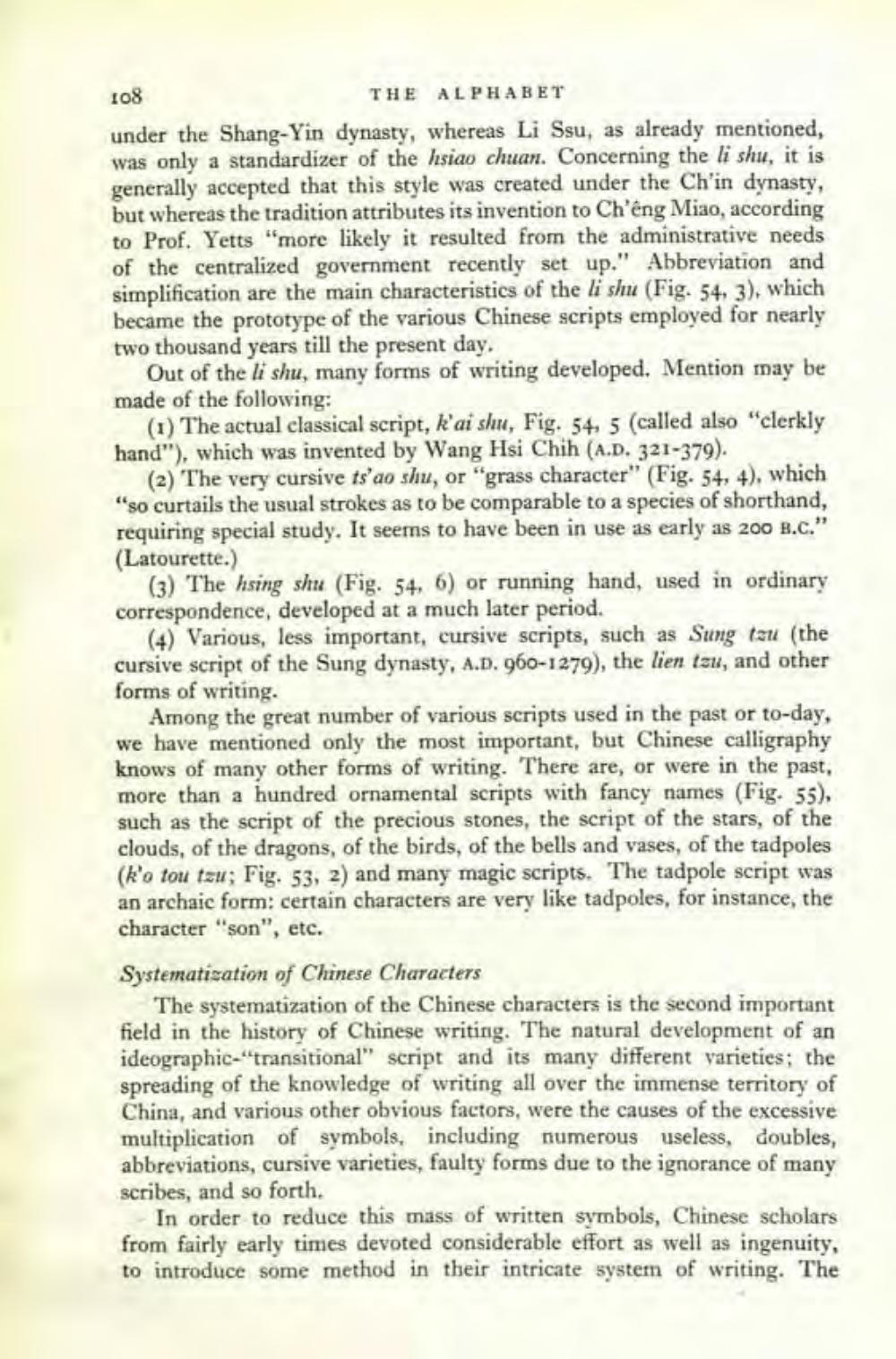________________
108
THE ALPHABET under the Shang-Yin dynasty, whereas Li Ssu, as already mentioned, was only a standardizer of the hsiao chuan. Concerning the li shu, it is generally accepted that this style was created under the Ch'in dynasty, but whereas the tradition attributes its invention to Ch'eng Miao, according to Prof. Yetts "more likely it resulted from the administrative needs of the centralized government recently set up." Abbreviation and simplification are the main characteristics of the li shu (Fig. 54, 3), which became the prototype of the various Chinese scripts employed for nearly two thousand years till the present day.
Out of the li shu, many forms of writing developed. Mention may be made of the following:
(1) The actual classical script, kai shu, Fig. 54, 5 (called also "clerkly hand"), which was invented by Wang Hsi Chih (A.D. 321-379).
(2) The very cursive ts' ao shu, or "grass character" (Fig. 54, +), which "so curtails the usual strokes as to be comparable to a species of shorthand, requiring special study. It seems to have been in use as early as 200 B.C." (Latourette.)
(3) The hsing shu (Fig. 54, 6) or running hand, used in ordinary correspondence, developed at a much later period.
(4) Various, less important, cursive scripts, such as Sung tzu (the cursive script of the Sung dynasty, A.D. 960-1279), the lien tau, and other forms of writing.
Among the great number of various scripts used in the past or to-day, we have mentioned only the most important, but Chinese calligraphy knows of many other forms of writing. There are, or were in the past, more than a hundred ornamental scripts with fancy names (Fig. 5). such as the script of the precious stones, the script of the stars, of the clouds, of the dragons, of the birds, of the bells and vases, of the tadpoles (k'o tou tzu; Fig. 53, 2) and many magic scripts. The tadpole script was an archaic form: certain characters are very like tadpoles, for instance, the character "son", etc.
Systematisation of Chinese Characters
The systematization of the Chinese characters is the second important field in the history of Chinese writing. The natural development of an ideographic-transitional" script and its many different varieties; the spreading of the knowledge of writing all over the immense territory of China, and various other obvious factors, were the causes of the excessive multiplication of symbols, including numerous useless, doubles, abbreviations, cursive varieties, faulty forms due to the ignorance of many scribes, and so forth.
In order to reduce this mass of written symbols, Chinese scholars from fairly early times devoted considerable effort as well as ingenuity, to introduce some method in their intricate system of writing. The




